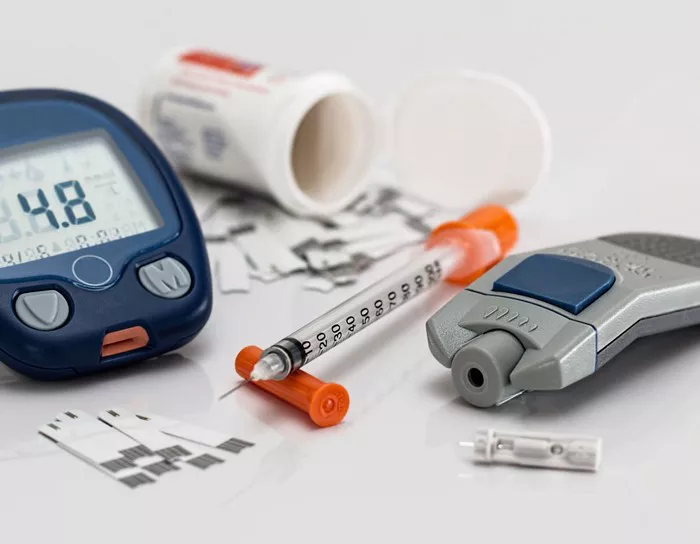Peripheral neuropathy and diabetic neuropathy are two conditions that affect the nervous system, leading to various symptoms and complications. While both conditions involve damage to nerves, they differ in their causes, symptoms, and management approaches. Understanding these differences is crucial for accurate diagnosis and effective treatment. In this article, we delve into the distinctions between peripheral neuropathy and diabetic neuropathy, exploring their symptoms, causes, risk factors, and treatment options.
Peripheral Neuropathy: A Comprehensive Overview
Peripheral neuropathy refers to damage or dysfunction of the peripheral nerves, which are the nerves outside the brain and spinal cord. These nerves are responsible for transmitting signals between the central nervous system and the rest of the body, including muscles, skin, and internal organs. When peripheral nerves are damaged, it can disrupt communication between the brain and other parts of the body, leading to a variety of symptoms.
Causes and Risk Factors
Peripheral neuropathy can result from various underlying conditions, injuries, or exposure to toxins. Some common causes and risk factors include:
1. Diabetes: Prolonged high blood sugar levels can damage nerves, leading to diabetic neuropathy, a type of peripheral neuropathy.
2. Autoimmune diseases: Conditions such as rheumatoid arthritis and lupus can cause inflammation of nerves.
3. Infections: Certain infections, such as Lyme disease, HIV/AIDS, and hepatitis C, can damage nerves directly or trigger an immune response that affects nerve function.
4. Trauma: Injuries, such as fractures or sports-related injuries, can damage peripheral nerves.
5. Toxic substances: Exposure to certain chemicals, such as heavy metals or chemotherapy drugs, can cause nerve damage.
6. Genetics: Some individuals may inherit conditions that make them more susceptible to peripheral neuropathy.
Symptoms
The symptoms of peripheral neuropathy can vary depending on the type of nerves affected and the extent of damage. Common symptoms include:
1. Tingling or numbness: Often described as a sensation of pins and needles or a loss of sensation in the affected area.
2. Burning or shooting pain: Some individuals may experience sharp or stabbing pain, particularly in the hands or feet.
3. Muscle weakness: Weakness or difficulty moving the affected limbs.
4. Sensitivity to touch: Even light touch or pressure can cause discomfort or pain.
5. Loss of coordination: Difficulty maintaining balance or performing fine motor tasks.
6. Changes in skin: Dry or cracked skin, changes in skin color or texture, or ulcers that do not heal properly.
Diagnosis and Treatment
Diagnosing peripheral neuropathy typically involves a thorough medical history, physical examination, and various tests, including nerve conduction studies, electromyography (EMG), blood tests, and imaging studies. Treatment aims to manage symptoms, prevent complications, and address underlying causes when possible. Treatment options may include:
1. Medications: Pain relievers, such as over-the-counter painkillers or prescription medications, may help alleviate discomfort. Additionally, medications used to treat nerve pain, such as gabapentin or pregabalin, may be prescribed.
2. Physical therapy: Exercises and physical therapy techniques can help improve muscle strength, flexibility, and coordination.
3. Topical treatments: Creams or patches containing capsaicin or lidocaine may provide relief from localized pain or discomfort.
4. Lifestyle modifications: Managing underlying conditions, such as diabetes or autoimmune diseases, through diet, exercise, and medication adherence can help slow the progression of peripheral neuropathy.
5. Alternative therapies: Some individuals find relief from symptoms through acupuncture, biofeedback, or transcutaneous electrical nerve stimulation (TENS).
6. Surgical intervention: In severe cases or when compression of nerves is causing symptoms, surgery may be necessary to relieve pressure on the nerves.
Diabetic Neuropathy: A Distinctive Subset of Peripheral Neuropathy
Diabetic neuropathy is a type of peripheral neuropathy that specifically affects individuals with diabetes. It is one of the most common complications of diabetes and can occur in individuals with either type 1 or type 2 diabetes. High blood sugar levels over time can damage nerves throughout the body, leading to diabetic neuropathy.
Types of Diabetic Neuropathy
Diabetic neuropathy can manifest in various forms, each affecting different nerves and causing distinct symptoms. The main types of diabetic neuropathy include:
1. Peripheral neuropathy: Similar to general peripheral neuropathy, this type affects the nerves of the extremities, leading to symptoms such as numbness, tingling, pain, and weakness in the hands and feet.
2. Autonomic neuropathy: This type affects the nerves that control involuntary bodily functions, such as digestion, heart rate, and blood pressure. Symptoms may include digestive issues, urinary problems, abnormal sweating, and sexual dysfunction.
3. Proximal neuropathy: Also known as diabetic amyotrophy, this type affects nerves in the thighs, hips, buttocks, or legs, leading to muscle weakness, pain, and difficulty moving.
4. Focal neuropathy: This type affects specific nerves, often causing sudden, severe pain in one area of the body. Focal neuropathy can also lead to muscle weakness or paralysis in the affected area.
Symptoms and Complications
The symptoms of diabetic neuropathy can vary depending on the type and severity of nerve damage. Common symptoms include:
1. Numbness or tingling: Particularly in the hands, feet, or legs.
2. Burning or shooting pain: Often worse at night and may interfere with sleep.
3. Muscle weakness: Difficulty moving or performing tasks that require fine motor skills.
4. Digestive issues: Such as nausea, vomiting, diarrhea, constipation, or difficulty swallowing.
5. Urinary problems: Including urinary incontinence or difficulty emptying the bladder completely.
6. Sexual dysfunction: Erectile dysfunction in men and vaginal dryness or difficulty achieving orgasm in women.
7. Foot problems: Due to reduced sensation, individuals with diabetic neuropathy are at increased risk of foot ulcers, infections, and other complications.
Diagnosis and Treatment
Diagnosing diabetic neuropathy involves a comprehensive evaluation of symptoms, medical history, and various tests, including nerve function tests, blood tests, and imaging studies. Treatment aims to manage symptoms, prevent complications, and control blood sugar levels effectively. Treatment options may include:
1. Blood sugar control: Maintaining target blood sugar levels through diet, exercise, medication, and insulin therapy is essential for preventing further nerve damage and managing symptoms.
2. Medications: In addition to pain relievers and medications for nerve pain, other drugs may be prescribed to manage specific symptoms or complications, such as digestive issues or urinary problems.
3. Foot care: Regular foot exams, proper foot hygiene, and wearing appropriate footwear can help prevent foot ulcers and infections.
4. Nutritional therapy: Working with a registered dietitian to develop a balanced meal plan that supports blood sugar control and overall health.
5. Regular monitoring: Routine check-ups with healthcare providers to assess symptoms, monitor blood sugar levels, and screen for complications.
6. Physical therapy and exercise: Exercises that improve strength, flexibility, and balance can help manage symptoms and reduce the risk of falls or injuries.
7. Smoking cessation: Quitting smoking can help improve circulation and reduce the risk of complications associated with diabetic neuropathy.
Conclusion
Peripheral neuropathy and diabetic neuropathy are both complex conditions that can have a significant impact on quality of life. While peripheral neuropathy can result from various underlying causes, diabetic neuropathy specifically affects individuals with diabetes due to prolonged high blood sugar levels. Understanding the differences between these conditions, including their causes, symptoms, and treatment options, is essential for accurate diagnosis and effective management. Early intervention, proper medical care, and lifestyle modifications can help individuals with neuropathy lead healthier, more fulfilling lives.



























